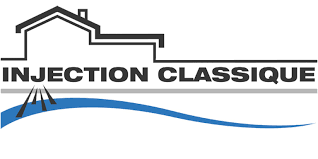There are many types of materials on the market and determining which material is needed must be specific to the problem. Our company policy requires us to use the best materials to ensure the quality of our work. Different variables must also be taken into account, such as the width of the crack and its location/accessibility, so that we can determine how to make a permanent repair.
When repairing a crack in a poured foundation wall (not to be confused with a crack in a cinder block wall) we use an epoxy injection. We only use a polyurethane injection for cold joints, inlet pipes, or similar situations when structural repairs are not needed.
Structural repairs can vary in size and we will determine if re-enforcing metal bars are needed. When a structural repair is required, re-enforcing metal bars are installed and anchored in place using an epoxy injection.
When dealing with a cinder block foundation, the repair must be performed from the exterior and you must apply a waterproofing membrane. Cement work on the mortar between the cinder blocks might be required and we use a grout/latex mixture before applying the membrane.
We will not inject a crack with polyurethane because we do not have confidence in that repair holding up over time. Since 2001 we have seen numerous cracks re-open and leak after they have been injected with polyurethane by other companies. In those cases we would have to excavate the exterior wall and apply a waterproofing membrane and re-enforcing metal bars to restore the foundations structural strength.
Epoxy not only stops the water from entering into the house, but it will also restore its structural integrity. We have been using epoxy injection since 1992 and have full confidence that this repair will hold up.
